| Reviews & Columns |
|
Reviews DVD TV on DVD Blu-ray 4K UHD International DVDs In Theaters Reviews by Studio Video Games Features Collector Series DVDs Easter Egg Database Interviews DVD Talk Radio Feature Articles Columns Anime Talk DVD Savant Horror DVDs The M.O.D. Squad Art House HD Talk Silent DVD
|
DVD Talk Forum |
|
|
| Resources |
|
DVD Price Search Customer Service #'s RCE Info Links |
|
Columns
|
|
|
Mannix: The Third Season
The Apocalypse. Summer, 1975. Unbeknownst to a young boy, a smiling, open-faced lad full of life and hopes and dreams of the future - not to mention a closet full of loudly checked, synthetic-fibered sport jackets - Mannix is...canceled. Summer dies, autumn falls, and with happy days of play and school and laughter comes the end of summer repeats and the beginning of the new television season. The boy, the blissfully unaware boy, anxiously turns on the channel at the appointed time, but some...some thing named Kate McShane appears (oh, a curse on you, Kate McShane! A curse on you for what you have done to this child, Devil's spawn!), and the boy retreats into a near-catatonic world of hopeless yearnings and bitter phantasms. No more sports coats. No more car phones. No more constant fishing trips. No more bullets wounds to the arm that heal by the following week. And no more beautiful women who flit in and out of the private detective's life without once calling their girlfriends to tell them what a bastard that detective was for loving and leaving them, because no woman is going to love him, to care about him, like they can, as they then embark on a series of cheap, ultimately sad affairs with an assortment of good-looking losers with major commitment issues who further lower the women's self-esteem, hence all the shopping and ice-cream eating.
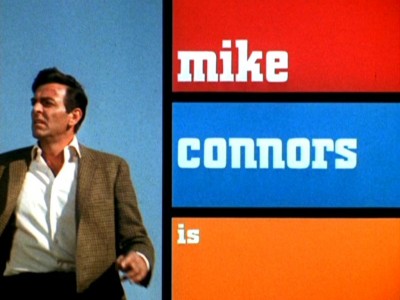
No...more...Mannix.
The earth shuddered, and slipped into darkness.
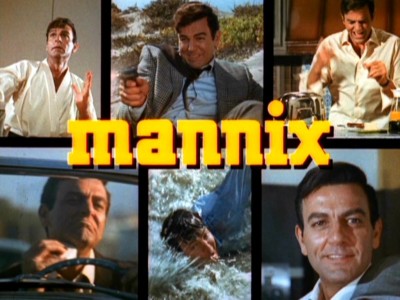
I can't hide anything from you, can I, dear reader. We all know who that little boy really was, don't we? The lonely little boy who was obsessed with TV, but who found in Mannix a powerful, near-perfect fantasy projection of "maleness"? And with that fantasy figure, the still-viable quasi-religious TV-sanctioned caprices of consumerism and the SoCal "good life" that lifted the boy out of his chilly Midwestern environs and gave him nothing as prosaic as an "education" or a "moral," but dreams? No? Still haven't guessed? Then I'll confess to you: the little boy was...
Greg Thompson down at the end of my street. A total head-case. On a lighter note, Paramount has released Mannix: The Third Season, a six-disc, 25 episode collection of the long-running detective series' 1969-1970 season. A particular favorite of mine during the days when a bit of tinfoil on the aerial of your portable black and white really made Joe's checkered sports jacket pop off the screen, Mannix is the kind of polished, assured, comfortable network product of that second, truly golden age of television, that now looks like it came from the moon in comparison with the tentative, nervous, compromised offerings showing up on the Big Three today (or Big Four, or more accurately, the Big 300+ networks that continue to splinter the collective TV audience). Good location work (and great Desilu backlot shoots, as well), pretty girls, tons of action, Touch Connors in all his hairy Armenian glory, and some deft, well-written mysteries add up to one of the best TV detective series in the genre. No extras though, unfortunately, on the Mannix: The Third Season set.
For the uninitiated in the world of Joe Mannix, West Los Angeles private investigator, a brief run-down of Mannix's set-up is in order. Having dumped the chilly confines of the MCA-like Intertect Agency two years before for his own home base of operations, private detective Joe Mannix (Mike Connors) pads down the stairs from his second floor apartment at 17 Paseo Verde, and accepts the always-waiting first cup of coffee of the day from his pretty secretary, appropriately monikered, Peggy Fair (Gail Fisher). "Regular Joe" Mannix, operating with that easy air of man who may have received one too many cracks to the skull, slips on his regulation sports coat or windbreaker, and calmly awaits his first beating of the day. In between assorted batteries on his person, Joe finds time to entertain clients in his Spanish-themed office, track down suspects in his sleek hunter green 1969 Dodge Dart GTS 340 convertible, complete with handy telephone (not a CB, but a real phone, complete with a clunky handle receiver, telephone number KG6-21-14), make time with any number of gorgeous women, and either beat or get beaten by apparently every known felon in the greater Los Angeles county area. Mannix always solves the case, and fees are only seldom paid. Oh, and if you need to contact Mannix, and he's not in his office, and his car phone isn't answering...try Los Angeles County Hospital.
SPOILERS ALERT!
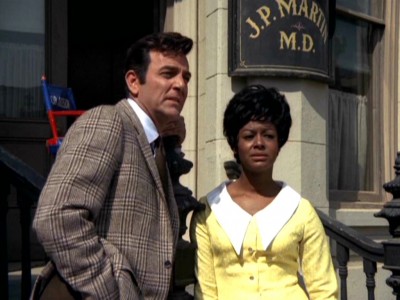
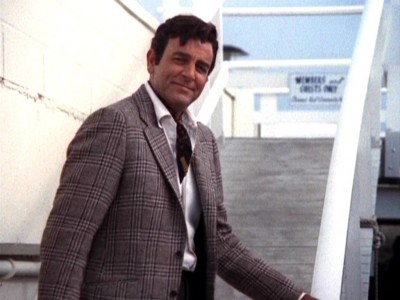
Prior to the release of the first two seasons of Mannix on DVD, I probably hadn't seen the series since its occasional 1980s summer repeats on the long-gone CBS Late Movie slot. A series I never missed as a kid, Mannix plays differently for me today, obviously, than it did as a boy totally immersed in 70s network television. Back during its original run, Mannix was considered top-flight entertainment, highly rated in its time slot (eventually hitting a peak of 7th for the year in the Nielsen's during its fifth season, before a disastrous schedule change killed its ratings), and as comfortable a television series - in the best sense of that word - as an old shoe. Facing stiff competition from The NBC Saturday Night Movie (and no competition from the last half hour of ABC's Hollywood Palace), Mannix still had a solid (if fading) group of past hits for its lead-in (The Jackie Gleason Show, My Three Sons, at a hefty 15th for the year, Green Acres, and Petticoat Junction), helping Mannix to finally crack the coveted Nielsen Top Thirty - at 30th for the year - this 1969-1970 season. By this third go-around, Mannix had its formula down pat, with involving mysteries bolstering its mixture of big-screen polish and trendy late 60s, early 70s television violence - along with an extremely likeable cast - that characterized so many network offerings at that time. Watching Mannix today, as well as other vintage shows from that era, it comes back to me just how enjoyable and well-crafted - how special - these network entertainments were over three decades ago. We viewers took shows like Mannix for granted; the dial was filled with comparably fine shows in all the genres, with detective/police series especially well-represented back then with excellent series like Hawaii Five-O, Cannon, Barnaby Jones, The F.B.I., Ironside, Adam-12, Kojak, and The Streets of San Francisco giving us more than enough action and suspense if we happened to miss an episode of Joe getting pummeled on any particular week. Seen today, Mannix and its kind play like Citizen Kane in comparison to the mostly-incompetent fare that comes and goes on the networks today.
When I watch a series from my childhood like Mannix, the tone of the scripting, directing, editing and performances peculiar to that time period immediately comes back to me, and the single best word I can summon up to describe that particular time in network television production is "assured." There's a professional gloss to Mannix that's not at all unlike the feature films that were playing in movie houses at the time (ironically, one might write a good thesis - just make sure you properly cite me - for television getting more glossy while hit, influential movies from this period like Easy Rider, M*A*S*H, and The French Connection become more grungy). And there's a professional, driving dynamic to the show's rhythm that only comes from the old "studio system" that may have died off in the motion picture business by this point, but which was still alive and well at the three TV networks. Writers that had long-standing relationships with certain networks worked with directors who honed their skills on countless episodes of serial TV, while studios like Desilu provided top-notch technical talent from veterans with decades of experience. Throw into that mix a talented, likeable performer like Mike Connors, who had worked his way up from cheap "B" exploitation fare to his own network series, Tightrope, and more polished, expensive feature films like Harlow and Where Love Has Gone, and you the ingredients for a "product" (not used pejoratively) that rarely if ever misfires.
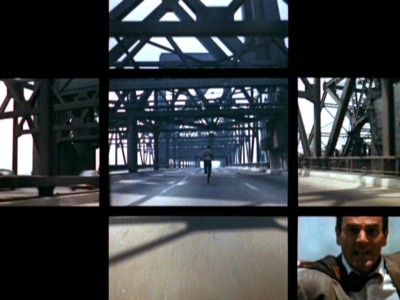
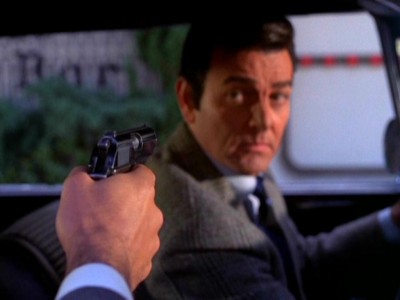
And that "big-screen," assured feel of Mannix is perfectly distilled down in its iconic credit sequence. Once the "teaser" element of the plot opens up the episode (playing very much in a Bondian manner of hooking the audience right from the start), the optically printed multiple frames checker-boarded onto the screen gives Mannix both a feature film feel (it was an expensive technique that suggested the various actions depicted were too large to be encompassed singularly on the then-small TV screens), as well as an almost comic book feel (the black borders with Mannix framed, engaged in various activities, looks like a comic come to life). And that cinematic technique at once embodies and "becomes" the content. Mannix's activities are larger-than-life and outsized for the TV screen, and the essence of those scenes depicted in comic book-styled graphics are violent, sexual fantasies long-associated with the fictional private detective genre. In this opening, the viewer is treated to all the glamorous, dangerous, romanticized activities a TV private eye engages in: he drives a Jeep over rough terrain; he rides along a dangerously narrow conveyor belt, gun drawn; he runs along in a field, either chasing someone...or getting chased; he spins a pretty girl off in slow motion; he eats a sandwich, shaves, and later burns a piece of toast (homey touches meant to convey Mannix's "regular Joe" status and endear him to the female viewers); he dodges a homicidal helicopter; he drives a Formula One racer; he's swimming for his life; he's drawing down and firing on a would-be assassin; he stands ready for his next judo assault. Beautifully fractured and self-reflexive, Mannix, framed tightly on only his eyes, watches a similar race car plunge off a cliff to a fiery end (is Mannix watching his own wreck, we might think at first?), or smacks a hood right in the kisser from three different angles, before he smacks a beautiful dame right on the lips as the camera dollies in over his shoulder, in the best Hollywood glamour style. All of this is in the opening title sequence, alternately jacked up with the sudden, blaring horns of composer Lalo Schifrin's theme that promises unequaled excitement, or mellowed with Schifrin's waltz-time piano bridge that offers a pleasing, sophisticated contrast to the violent goings-on. How can anyone watch that opening title sequence, and not "get" Mannix in a heartbeat?
Certainly Mannix's reputation as an excessively violent actioner has suffered somewhat when compared with shows on television today, but its seemingly unending series of beatings, shootings, stabbings and high falls only amplifies and reinforces that fantasy element of the series that proved so popular, then and now. No licensed P.I. could ever get away with Mannix's countless fistfights and shootings (he kills at least three people this season) without his license being pulled, or at the very least grand jury inquiries or even a newspaper story now and then (we never see a reporter showing up and grilling Mannix over the latest act of mayhem he participated in). Even more basic a reality that is utterly ignored in Mannix, no human being could ever survive the torturous assaults on their bodies that Mannix apparently does on a daily basis. During this third season, Mannix, in addition to the beatings he delivers (his hands would look like two giant hams), is subjected to several bullet wounds (both arms, with subsequent cool one-armed fighting on his part, as well as a grazing to the head, causing blindness, the second most popular TV malady right after temporary amnesia), as well as broken ribs, a neck brace when he falls through a second-story porch, and numerous other assaults that lead to him getting thrown down an empty elevator shaft and into a dumpster. My personal favorite is an attack by a rottweiler - thank god Mannix is wearing one of his industrial-strength polyester sports coats which he wraps around his arm for protection (in the very next scene, he puts the coat back on...not even a snag - thank you, Dupont!). All of this is amusing now since the conventions of the early 70s police/detective TV shows have been the fodder for jokes for decades now, but Mannix plays all of this straight, and to its credit, it only seems outlandish when episode after episode is watched one after the other (where the effect becomes more noticeable).
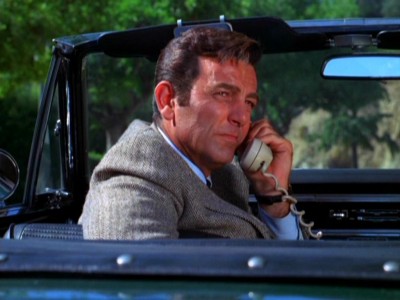
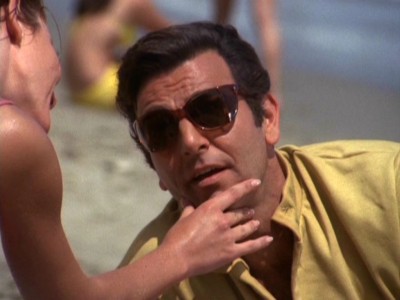
Further adding to the fantasy element of Mannix is, well...everything. Mannix is more than comfortable in announcing its obvious intentions, right off the bat. In the excellent A Question of Midnight, Mannix tells a sultry, surprisingly bitchy (and all the more hot for that change of demeanor) Lee Meriwether, "It seems a lot of people have a lot of things to hide around here. Now that makes for a good mystery. That's how I make my living - finding out things." You can't get much more upfront than that, and most Mannix episodes boil down to that simple paradigm: Mannix sticks his nose in where it's not wanted, and gets beaten up for his troubles, before he eventually puts the pieces together of the surprisingly dense puzzle...while getting in his own licks before the fade-out. Mannix as a real character, though, is elusive - and probably designed as so. If I want to create a veritable commercial promoting the idealized "regular Joe" American male-as-action-hero/lover," I'm not going to promote his politics (you'll lose half the audience), or show too much of his self-doubt, or angst, or other personal foibles for fear of grounding the fantasy. We never get to "know" Joe Mannix on a deep level (we never even see bedroom upstairs, or much else of his apartment - only his office downstairs). We're given some cursory background, such as conflict with his father over leaving the family vineyards for the exciting streets of L.A. (Return to Summer Grove), and quite a few clients come to Joe already knowing him in some other context (the military, hometown, other cases, other detectives). But "Joe Mannix" as a three-dimensional person? Not so much. The outward trappings of a fictionalized, romanticized TV detective are emphasized, though, in keeping with a fantasy figure, not a fully developed character. Joe has married his home and office life into one functional, attractive package at 17 Paseo Verde, with a beautiful, eternally devoted secretary who goes above and beyond the call of duty on a regular basis for her boss. Joe has his sharp, sleek convertible any single man (or particularly married man) wouldn't mind having - particularly with a car phone in it. He's sartorially resplendent, with a never twice-worn array of Botany 500 casual wear that screamed "stylishly comfortable" (my favorite? The brown suede windbreaker with the black turtleneck and the loafers), heavy, wrap-around Ray-Bans, and that unruly wool of jet-black Armenian hair perfectly styled (not too dry, not too wet - has to be in the Top Ten heads of hair ever on TV). No wonder that practically every woman Mannix meets takes one look at this walking advertisement for early 1970s testosterone and gets the heebie jeebies (on second thought, maybe that's more realistic than I give it credit for).
Again, though, "fantasy" isn't used as a negative here. Who cares if Mannix is "realistic" or not - whatever that means, anyway? Mannix's job is to entertain, and to provide a surrogate for our own feverish little dreams of power - personal, professional, and sexual - while we ponder a nice little mystery in the bargain. And Mannix does this expertly. The characters in a typical Mannix episode are one step up from "stock" (with terrific supporting actors usually elevating those characterizations higher), while the exposition-heavy plots overwhelm the viewer with detail to delightfully confuse them in the best noir fashion. Sometimes the action predominates (The Sound of Darkness, which references Wait Until Dark nicely); sometimes it's the characters (The Playground features Robert Conrad doing what he does best: playing an obnoxious ass), and sometimes the mystery prevails (the terrific Murder Revisited is very much in the Columbo mold). Direction is often top-notch, as well. Sutton Roley, a veteran of numerous TV episodes and movies, comes up with a truly intriguing method of using extreme close-ups as uncut bridges to flashbacks in A Question of Midnight) that I found noteworthy (did they use flying sets to accomplish this?), while most other Mannix directors keep the pace solid and driving along (I also noticed quite a bit hand-held camerawork, which was creeping into staid, formalized TV shooting just at that time). Of course, none of this would matter if Mike Connors wasn't so...Mannix-y. It's a cliché about successful television, but the "likeability" factor is still a key ingredient to a winning series formula, and certainly Connors fits the bill here. It's always dangerous to assume any similarities in personality between actors and the characters they play, but you get the feeling, at least, that maybe Connors is as laid-back and "regular" as Joe Mannix. There's an inherent decency to the Mannix character - he never turns down a first kiss from some urgent woman, but he's just as likely to stop it right there - that's quite appealing inbetween the inhuman bashings he gives and gets. Without Connors' decent guy/tough guy balancing act, it could be easy to chalk Mannix up as some kind of sado-masochist who doesn't exactly mind the appeal of a well-applied leather sap to the noggin. It may not have been a challenging role for the actor to play over and over again, for eight seasons, but Connors seems game throughout: a handsome, well-dressed, well-appointed, charming, down-to-earth guy who's equally tough and romantic. In other words, the perfect fantasy figure for both men and women.
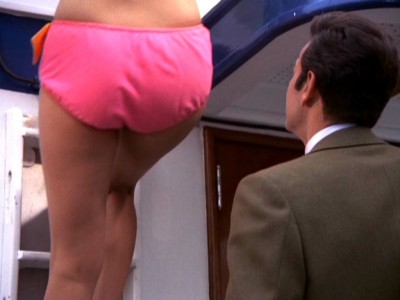
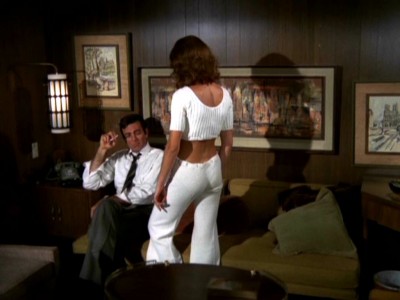
Here are the 25 episodes of the 6-disc set, Mannix: The Third Season, as described on the flip side of the cover artwork. Please note: there is the now-standard Paramount warning, in tiny font, that "some episodes may be edited from their original network versions." If these were, I didn't see any obvious signs of tampering. All the run times came in at around 51 minutes, which seems right if you lose the standard promos and bumpers that originally aired with the episodes (the loss of which might account for that warning). Any hard-core, hard-nosed Mannix experts that spot something amiss, please email me and I'll amend the review.
DISC ONE
Eagles Sometimes Can't Fly (9/27/69)
Mannix tries to help two of Peggy's friends who are wanted by the police. They were at a liquor store holdup gone awry that left two people dead.
Color Her Missing (10/4/69)
After his colleague is thrown off a balcony, Mannix agrees to help the suspect - a disreputable lawyer whose only alibi is a mysterious girl who disappeared.
Return to Summer Grove (10/11/69)
Joe travels to his hometown, where he hopes to clear the name of a murder suspect confined to an iron lung. Later, he tries to reunite with his estranged father.
The Playground (10/18/69)
Someone's trying to kill one of Hollywood's biggest action stars, who claims to have no fear. Now it's Mannix's job to protect him and find the culprit.
DISC TWO
A Question of Midnight (10/25/69)
Mannix works hard to clear the name of a former doctor, who lost his hospital job when a high-profile patient died on the operating table.
A Penny for the Peepshow 11/1/69)
Three escaped convicts storm into his office and hold Mannix, Peggy, and a client hostage. So Mannix tempts them with the possibility of a $300,000 payoff.
A Sleep in the The Deep (11/8/69)
A murder at the marina allows Mannix the opportunity to spend time on luxurious yachts - and in the company of gorgeous women - as he searches for a killer.
Memory: Zero (11/22/69)
Mannix protects a beautiful secretary whose life is in danger. Meanwhile, he is also hired by a shady real estate developer who is being blackmailed.
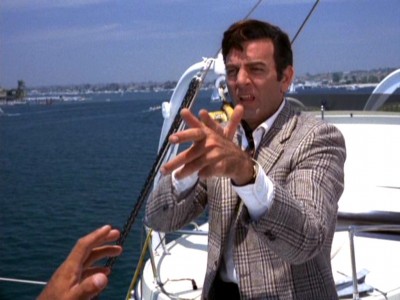
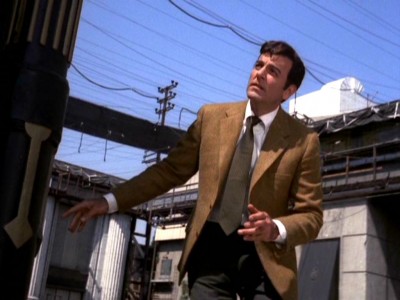
DISC THREE
The Nowhere Victim (11/29/69)
Immediately after a hit-and-run accident, the victim disappears. So Mannix poses as the driver, but then lands in the middle of a mob war.
The Sound of Darkness (12/6/69)
After he is temporarily blinded by a hit man's bullet, Mannix enlists the aid of an ex-Marine, who teaches Joe how to survive the next attempt on his life.
Who Killed Me? (12/13/69)
A rich man's plane goes down and everyone assumes that he is dead. But then he shows up on Mannix's doorstep, wondering who could have set him up.
Missing: Sun and Sky (12/20/69)
Although their transport plane landed safely, an entire crew was drugged and unconscious. The missing cargo? A million-dollar racehorse.
DISC FOUR
Tooth of the Serpent (12/27/69)
The son of a tough cop appears to be mixed up in a string of warehouse robberies. So his concerned mother hires Mannix to save him before it's too late.
Medal for a Hero (1/3/70)
When the police bust a warehouse, stolen furs and jewels are recovered. But so is a list of cops who were on the take - including Peggy's late husband!
Walk With a Dead Man (1/10/70)
Mannix meets a new client on a bus, a businessman being blackmailed. But when Joe kills the blackmailer in self-defense, his client acts like they never met.
A Chance At the Roses (1/17/70)
Mannix reluctantly takes an open-and-shut case where a young addict apparently robbed a pharmacy. But then Joe discovers that there was a mob connection.
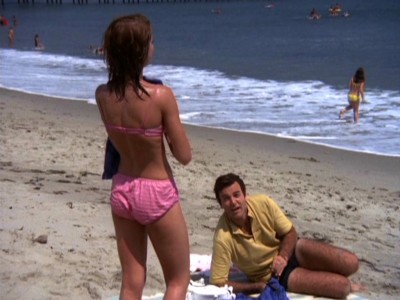
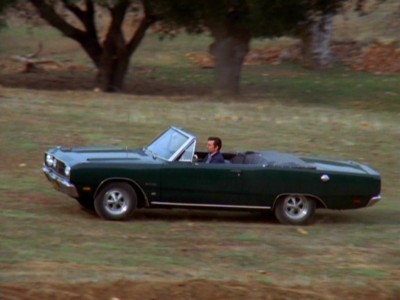
DISC FIVE
Blind Mirror (1/24/70)
A murder attempt on the beach is recalled in flashback by the parties involved, and Mannix is not sure who to believe - the victim, the accused, or the witness.
Harlequin's Gold (1/31/70)
Mannix goes undercover on the waterfront in order to locate the heir to a fortune. Later, Joe learns that the sailor may have been witness to a mass murder at sea.
Who is Sylvia? (2/7/70)
When Joe attends a party thrown by a Korean war buddy, he doesn't realize he's really there on behalf of his friend's wife - since someone's trying to kill her.
Only One Death To a Customer (2/14/70)
Even with three attempts on his life, Mannix still can't figure out who would want him dead. But he thinks it may be tied to a late convict's stolen fortune.
DISC SIX
Fly, Little One (2/21/70)
A little girl lives in a fantasy world and thinks pirates have stolen a treasure. But Mannix thinks she may have overheard a real crime being planned.
The Search For Darrell Andrews (2/28/70)
After his detective friends is killed, Joe finds a roll of film incriminating the mastermind of a bank robbery. But then Peggy and her Toby are kidnaped.
Murder Revisited (3/7/70)
A bombastic talk show host hears gunshots while on the air. Now a man is dead, a woman is arrested, and her twin hires Mannix to clear her sister's name.
War of Nerves (3/14/70)
What starts out as a missing persons case turns into a potential disaster. A group of men have hijacked a canister of nerve gas and kidnaped the only witness.
Once Upon a Saturday (3/21/70)
Mannix is in for quite a ride when he attempts to help an old friend, a female carnival owner. Just before her grand opening, someone tried to kill her.
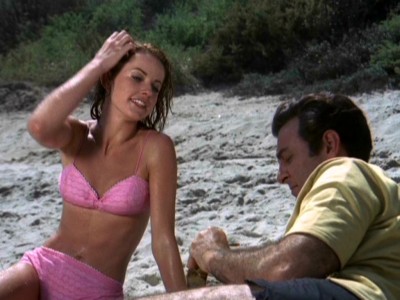
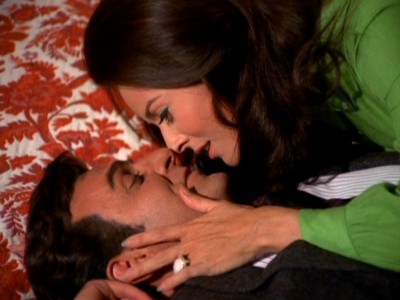
The DVD:
The Video:
I was quite pleased with the full-screen, 1.33:1 video transfers for Mannix: The Third Season. Colors are generally saturated, with a fairly bright, sharp picture. Grain is present, but compression issues are not. Looks way better here than on my 9" B&W portable (although admittedly, it was more fun on a school night sneaking a peek at Mannix under the covers when it was past my bedtime).
The Audio:
The Dolby Digital English audio track is big, fat mono - and it plays just fine. All dialogue is surprisingly clear, while hiss was at an absolute minimum. English subtitles and close-captions are available.
The Extras:
Unfortunately, those first season extras appear to be it for the series - nothing in the way of a bonus this go-around. Pity.
Final Thoughts:
Essential viewing. I know there have been other, newer detective and police shows that purportedly reek of searing honesty and uncomfortable, complex drama...but do those detectives have hair like that? No way, buddy boy. Mannix: The Third Season finds the show comfortably in the groove of providing smart little mysteries within a structure of outsized, big-screen action, with regular guy Mike Connors grinning his way through what has to be the biggest HMO bill in television history. A winner all the way down the line. I highly, highly recommend Mannix: The Third Season.
Paul Mavis is an internationally published film and television historian, a member of the Online Film Critics Society, and the author of The Espionage Filmography.


|
| Popular Reviews |
| Sponsored Links |
|
|
| Sponsored Links |
|
|
| Release List | Reviews | Shop | Newsletter | Forum | DVD Giveaways | Blu-Ray | Advertise |
|
Copyright 2024 DVDTalk.com All Rights Reserved. Legal Info, Privacy Policy, Terms of Use,
Manage Preferences,
Your Privacy Choices | |||||||














